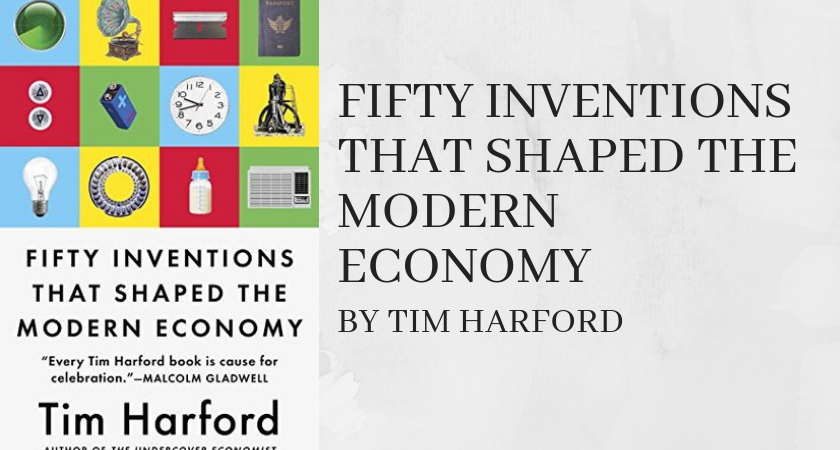I heard about this book from The Indicator since it was one of their recommended ‘beach reads’ (because economics can be fun!). It sounded pretty interesting, so I found a library copy and started reading it.
Divided into seven sections, the book covers fifty different inventions that Harford feels shaped our modern economy. As he says in the introduction, “this book isn’t an attempt to identify the fifty most economically significant inventions”. Things like the printing press, the steam engine, the airplane, etc have been omitted in favour of other stories waiting to be told. So don’t go into the book expecting the top fifty most important economic inventions (although all fifty here are pretty important).
Inventions talked about in this book range from the plow to double-entry bookkeeping to paper. Topics covered are:
- Winners and Losers: Looking at who gains and who loses by an invention or revolution. Examples include barbed wire, seller feedback, and the passport.
- Reinventing How We Live: Looking at inventions that “shape our world whether we buy them or not”. Inventions in this category include infant formula, market research, and department stores.
- Inventing New Systems: Looking at inventions that work as part of a system, such as the bar code, tradable debt, and the Billy bookshelf.
- Ideas about Ideas: The inventions here are a bit more abstract, but they are important because they affect all the other inventions. For example, cuneiform (writing), management consulting, and intellectual property, among others.
- Where Do Inventions Come From: Harford traces the history of some inventions to look at their origins. For example, the iPhone and the clock.
- The Visible Hand: We all know about the invisible hand, but what about the visible hand of the government? This section looks at things like banks and antibiotics in farming. To be honest, I didn’t really see the visible hand in some of these inventions.
- Inventing the Wheel: This is all about the metaphorical wheels that have been reinvented, such as paper, concrete, and insurance.
Since this book covers fifty inventions, there isn’t much time for each of them. Harford does a very good job compressing most of stories into a couple of pages. However for some, like paper, it feels like he barely got to summarise the story before it ended (no wonder, given that paper has at least a book dedicated to it). I’m also wondering how important some of the inventions were – I’m sure that changes are very complex and sometimes, there wasn’t much discussion of the other factors that were involved.
Overall, though, this was a very fun read that explores various aspects of the economy. It takes a broad view of how the economy has changed over time and made me appreciate the seemingly common inventions in my life.
